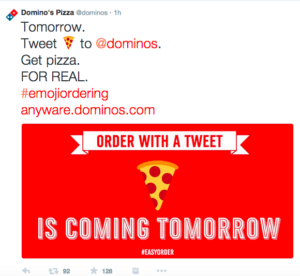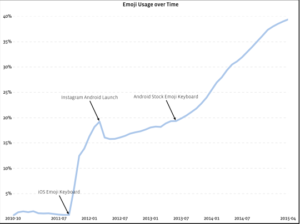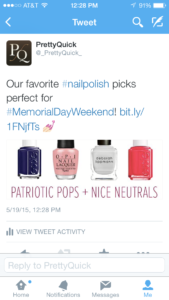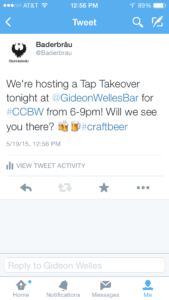Today, Dominos is rolling out a “tweet-to-order” service. Once a customer has registered their Twitter handle on their Domino’s Pizza Profile, all you have to do is tweet the pizza emoji to @dominos and a pizza is delivered to your door step. Domino’s will then send you a direct message to confirm the order and the Easy Order saved in your customer’s profile will be automatically sent to your home.
Brands are always trying to find unique and creative ways to reach millenials, the generation that grew up in a social, mobile and digitally-connected world. The generation that communicates with text messages and, increasingly, with emojis. Working in social media and communicating as a brand, it’s important to be able communicate with your target audience effectively, to demonstrate that you’re on top of the latest trends, and to convey messages in a simple way. What better way than with an emoji?
Brands are embracing emojis to enhance their marketing efforts and to communicate with audiences on social media. According to data from eMarketer, there are nearly 2 billion smartphone users worldwide, and 41.5 billion messages and 6 billion emoticons or stickers are sent around the world every day on mobile messaging apps, according to branded digital startup Swyft Media.
Emojis represent a more visual form of communication, presenting brands with an opportunity to convey their messages more creatively and to make posts more fun and expressive.
Last year, Budweiser seamlessly used emojis to celebrate the 4th of July and have continued to use them in promotional tweets and messages.

Emojis have become so mainstream that brands are now looking for ways to make them more personalized. Like Burger King, who celebrated the addition of its Chicken Fries product as a permanent menu item with a Chicken Fries emoji keyboard.
Instagram has jumped on the bandwagon, too, and just recently update their app to include emoji hashtags and the ability to search emoji hashtags.
Previously, Instagram’s hashtag feature did not support emoji, so comments or captions with the hashtag symbol and emoji were not searchable. Now, users can add emoji (or a string of emoji) to hashtags and posts that have been previously tagged with the characters will also show up in searches.
According to Instagram research, within a month of iOS launching the emoji keyboard in 2011, 10% of the captions and comments on the platform contained at least one emoji character. Just four years later, that number is now nearly 40%.
Keep it simple and start small. Start by simply adding emojis to your tweets or Instagram posts. Just make sure they are appropriate and “on brand.” For example, a manicure emoji works perfectly for a beauty client while the beer emoji is great to promote a craft beer event for a brewery.
If the rise of emoji teaches us anything, it’s that brands are looking for more effective ways to communicate information in unique and creative ways with their audience Now that’s something to 🙂 about.








